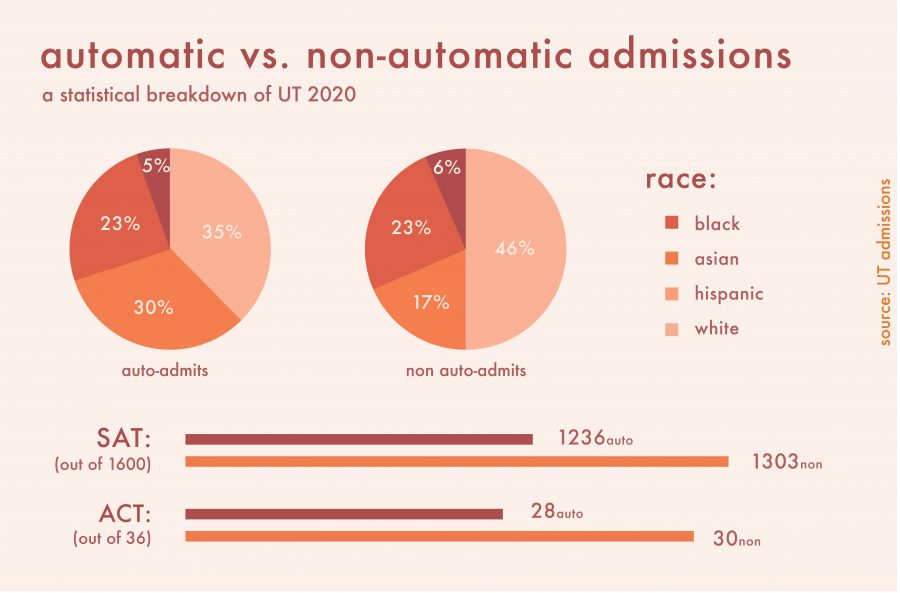“I didn’t get in.” It’s a common saying for seniors in high school when applying to colleges and universities but one I hear too often from hopeful seniors applying to UT. The Top Ten Percent rule, a Texas legislative measure, mandates high school seniors in the top ten percent of their class gain admission to any public school in Texas.
For UT, the metric is more competitive: The top seven percent gain automatic admission. These applicants take up the bulk of UT’s admission, leaving little room for people even just outside of that mark to compete for a spot at Texas’ top state university. The academic difference between rank 35 and 36 in a class of 500 is doubtful. Instances have occurred where students were admitted to Vanderbilt and other top tier schools but not UT, bringing into question the validity of UT’s admissions. As an unintended consequence, parents who grew up Longhorns are now sending their children elsewhere, creating a lingering fear of a brain drain for Texas businesses.
The evidence has shown that the Top Ten rule is ineffective at its original aim and is instead an undue burden on Texas’ flagship university. Originally touted as a way to boost minority enrollment and give students from inner cities and the rural plains a chance to gain access to Texas’ top public schools, the results aren’t measuring up. An enrollment gap of over 5 percent still exists for Blacks and over 20 percent for Hispanics, according to a project by The Texas Tribune in 2016. The Top Ten Percent rule did manage to increase diversity at Texas A&M by 114 percent from 2003 to 2015, but both UT and A&M don’t have their numbers in the places they should be after 20 years of the rule.
“The University of Texas needs to have greater latitude,” Gov. Greg Abbott said in an interview last year. In addition, UT System Chancellor McRaven went as far as to claim that UT isn’t moving up in rank nationally because of the state’s infringement upon UT’s admissions process: “To make sure the right students are coming to the university, that alone will put us in the position to be a more competitive university," McRaven said last year, adding that “right now what is holding us back is the 10 percent rule.”
Proposed after a U.S. 5th Circuit Court of Appeals ruling in 1996 that effectively ended affirmative action in Texas, Top Ten formed a rare coalition of rural and urban Texas legislators to pass the bill so that students in Texas districts, who occupy a vast ethnic and economic spectrum, are given an opportunity to succeed at state schools regardless of their school’s standing. Its immediate victories turned into a prolonged disappointment, and the Top Ten’s time has come and gone.
Top Ten has left UT with an entering class that has average SAT scores and a graduation rate below that of peer universities, UT officials claim. The Top Ten’s future has been in question as recently as this past legislative session, when a Senate committee proposed to significantly weaken it.
Though the Top Ten rightfully looks to help minorities and students from rural and urban districts, we should look for ways to help those students directly — perhaps earlier on — without casting such a broad admissions net. From producing only a modest minority enrollment boost to arbitrarily rewarding students from a certain percentile of their class, Top Ten is a blunt tool: We need something sharper.
Verses is a Plan II and environmental engineering freshman.





















